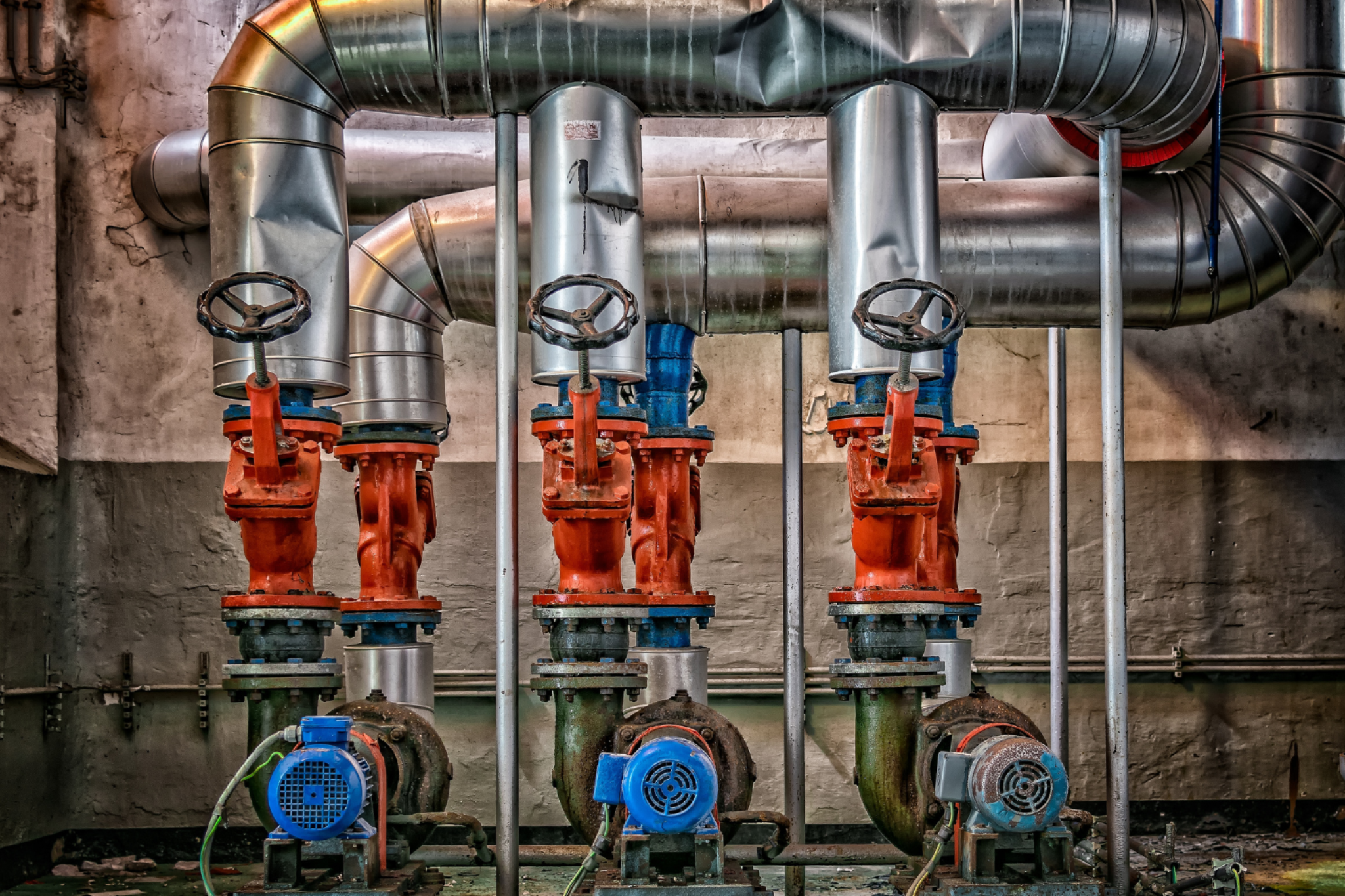
17 Jan THE PILLARS OF INDUSTRIAL REFRIGERATION
At the core of key sectors such as food, pharmaceuticals, chemicals, and logistics lies industrial refrigeration systems. These giants not only preserve the quality and safety of products but also comply with stringent regulations and optimise energy resource usage.
But what makes this flawless orchestration of cold possible? It all comes down to a set of components that, when working in harmony, deliver exceptional results.
Compressor: The Engine of Cooling in Action
The compressor is the true protagonist of the refrigeration system. Acting as the engine driving the refrigeration cycle, its role is to compress gaseous refrigerant, increasing its pressure and temperature to enable efficient flow.
Each type of compressor—be it piston, screw, scroll, or centrifugal—is designed to address specific needs. Beyond simply moving the refrigerant, an efficient compressor makes a substantial difference in energy consumption and system longevity, helping to minimise costs and environmental emissions.
Evaporator: Turning Heat into Cold
If the compressor is the engine, the evaporator is the heart where the magic happens. Here, the refrigerant absorbs ambient heat and evaporates, creating the much-desired cooling effect. This component serves as the point of contact between the system and the space to be cooled, and its design determines how efficient and uniform the temperature reduction will be.
The key to its performance lies in a clean, optimised design that ensures effective heat transfer, maintaining consistent and reliable cooling.
Condenser: The Guardian of Thermal Balance
The condenser is responsible for releasing the heat collected by the system, acting as a thermal escape route. In this stage, the hot gaseous refrigerant releases heat into the environment (whether air or water), transforming back into a liquid and completing the refrigeration cycle.
An efficient condenser is vital for maintaining system operation with minimal energy consumption. Poor design or maintenance can elevate system pressure, causing inefficiencies and unnecessary wear.
Expansion Valve: Where Balance is Achieved
The expansion valve plays a critical role by regulating the flow of refrigerant into the evaporator, reducing its pressure and temperature. This enables the refrigerant to absorb heat optimally, ensuring stable and efficient operation.
Precision in this component prevents issues such as evaporator overload or underperformance, guaranteeing that every drop of refrigerant performs its task effectively.
Refrigerant: The Fluid Driving the Cold
The refrigerant is the lifeblood of the refrigeration system, acting as the heat carrier that makes the process work. Its ability to change states—from liquid to gas and back—makes it the key player in thermal energy transfer.
Choosing the right refrigerant is not merely a technical decision; it also has a direct impact on sustainability. Opting for environmentally friendly options and handling them properly helps protect the environment while maximising system efficiency.
Control System: The Brain Behind the Cooling
The control system is the brain that orchestrates the entire operation. From adjusting temperature to monitoring pressure and overseeing refrigerant flow, it ensures all components work in perfect harmony.
Thanks to modern technologies such as smart sensors and remote monitoring, control systems can detect issues before they escalate into failures, reducing operational costs and extending equipment lifespan. Furthermore, an efficient control system directly contributes to energy savings, benefiting both operators and the planet.
The Perfect Symphony of Cooling
Industrial refrigeration systems are more than just functional machinery; they are strategic allies that ensure quality, efficiency, and sustainability in critical industries. From the compressor that sets everything in motion to the control system that monitors every detail, each component plays an essential role.
Investing in maintenance, efficient design, and advanced technology not only optimises outcomes but also ensures that this industrial heart continues to beat in tune with the demands of the market and the environment.


